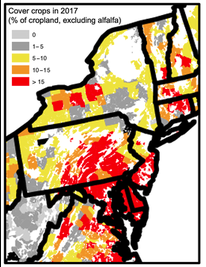State funding boosts use of cover crops
ALBANY COUNTY — If you fund it, they will come, according to a new study on the effectiveness of grant money in encouraging farmers to plant more cover crops on their land.
Cover crops are meant to literally cover soil, locking it down so that it’s less susceptible to erosion, while also trapping nitrogen, and providing habitat for pollinators, according to the United States Department of Agriculture.
The New York State Department of Agriculture and Markets’s Director of Public Information, Jola Szubielski, told The Enterprise in a statement that use of these crops “is an important best practice implemented by many farmers to keep nutrients and other potential pollutants from entering waterways, promote soil health, and aid farms to be more resilient to climate change-driven extreme precipitation.”
But because cover crops aren’t planted for the purposes of harvesting, testing them out can be a financial risk for farmers already working on thin margins. To push back on that, public funding is leveraged to incentivize their use.
A study published this summer found that such funding was highly effective in New York, Maryland, Pennsylvania, and Vermont, doubling the amount of land that these crops cover, with male farmers with large farms being the most likely to participate in programs. The study also found that cover-crop use often continued even after these farmers were no longer enrolled in the programs.
According to the New York’s Department of Ag and Markets, state programs alone have resulted in “94,000 completed acres and roughly another 80,000 acres of cover crop projects under contract across New York State, for a total of 174,000 across both the Agricultural Non-Point Source Abatement and Control (AgNPS) Program and the Climate Resilient Farming (CRF) Grant Program.”



